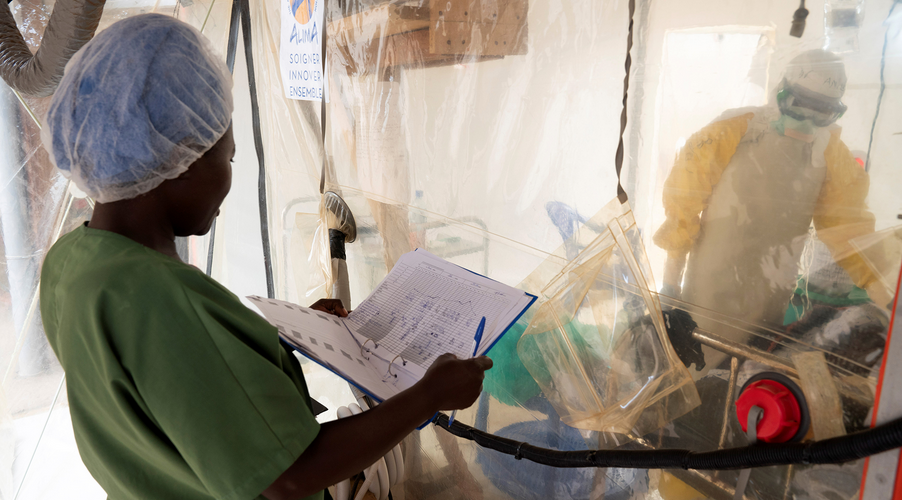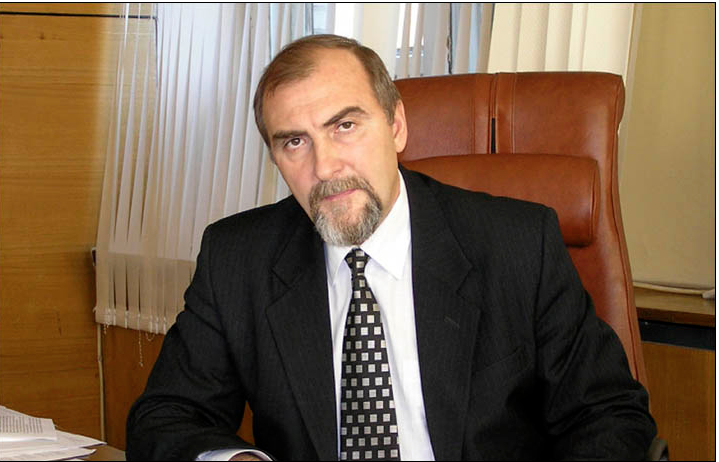GENIES, BOTTLES AND BLASTS – Keeping the jinn confined – or not
According to the Holy Qur’an, the Jinn are spirits, invisible to us, made by Allah “from a smokeless fire”. We ordinary mortals were made later. According to Sura (Chapter) 55, “He created man of a clay, like the potter’s”, while angels were made from light. In Islam, the Jinn could be good, evil or (like most of us) somewhere in between. Indeed, Sura 55 rather suggests they are an equal but separate form of being, not unlike humans, sharing the same temptations and obligations and anticipating the same rewards for holiness, including “maidens restraining their glances, untouched before them by any man or jinn”.
“O tribe of jinn and of men, if you are able to
pass through the confines of heaven and earth,
pass through them! You shall not pass through
except with an authority.”
(Translation by Arthur J. Arberry, Oxford University Press)
During what is sometimes called the Golden Age of Islam (generally thought to have been between the 8th and 14th century) a number of Middle Eastern folk tales were gathered together and set down in Arabic, although they came from a variety of traditions, including Indian, Jewish, Turkish and Persian. They are known as the Tales of One Thousand and One Nights. The surrounding story that gathers them together gives the names of the main players (at least in the Medieval European version) as King Shahryār and his wife-of-one-day, Scheherazade, who saves herself from execution by telling him stories with cliff-hanger endings he simply must hear, thus postponing her demise. His previous wives had all been ordered to tell him a story and then, after one night together, he’d had them killed to prevent them from ever being unfaithful. Eventually, the country ran out of virgins so he married Scheherazade, his Vizier’s daughter. Aladdin and Ali Baba were not in the original Tales but were added in the 18th century by a French lover of oriental folklore, Antoine Galland. The one about the genie, though, is there and features a poor fisherman who finds a bottle which, when he tries to clean it, releases a genie. It takes trickery on the fisherman’s part, playing on the genie’s boastfulness and pride, to get it back in the bottle.

In some ways, bacilli and viruses could be compared with genies (or jinn, which is the plural of the original word for a single one, jinni): they came along eons before we humans evolved, (3.8-billion or more years ago for microbes, 900-million years for the first multicellular life) only they’re invisible, some are very good for us, like our gut biome bugs, and some are horrible, like smallpox, Ebola and HIV. The latter types are much better kept in sealed bottles, never to be released. Which is why news of an explosion and fire at a biological research laboratory in Russia has caused widespread alarm. The facility, known as the Vector Institute, is one of only two facilities in the world permitted by the World Health Organisation (WHO) to store the smallpox virus, variola (the other is the US Centers for Disease Control and Prevention, in Atlanta, Georgia). Many experts wonder why the virus is allowed to be retained anywhere since the disease was declared by the WHO in 1980 to have been eradicated. What use can the virus be to researchers when the last known case – fatal, as usual – was in 1978? But the Advisory Committee on Variola Virus Research is divided on the issue. At a meeting in September 2018, most members agreed that samples of the live virus should be kept in order to help develop other anti-viral drugs that could be needed in future. Others say that new vaccines could be developed using gene fragments, sequenced from the live virus or from similar viruses, such as monkeypox.
But there is another concern: the scientist who ran the institute for five years from 2005 to 2010 disappeared without trace in January, 2017. Professor Ilya Drozdov, reports the Siberian Times, was under investigation for fraud, although not a big one by global standards. State investigators accused him in absentia of misappropriating around 2-million roubles (€28,000), which he is believed to have used to buy an apartment. He is also accused of abuse of office. After leaving Vector, he returned to his native Saratov but Russian police say he is no longer there. Interpol has put him on its wanted list which suggests the Russians believe he has left the country.

He was not a popular head of Vector. The Siberian Times reports one of many complaints. “In an open letter Pavel Korchagin, director of Prospekt, the largest construction company in Koltsovo scientific city, claimed executives were paid ‘exorbitant’ salaries while there were ‘humiliatingly low wages’ for regular employees and ‘destruction of the most significant research areas’.” Many staff left in disgust during his tenure there. So far, no-one has suggested the Professor, who was 63 when he disappeared, took any samples with him – after all, it’s now nearly a decade since he left Vector. But he is a leading microbiologist with a vast knowledge, while a Russian defector, Professor Ken Alibeck, now living in the United States, claims that not only was Vector in the front line of biological weapons research, weaponizing both Ebola and smallpox viruses, but also that Russia retained an undeclared cache of variola viruses at the Virology Centre of the Scientific-Research Institute of Microbiology, a Russian Defence Ministry laboratory near the city of Sergiyev Posad, just outside Moscow. No wonder Russia is worried. The most dangerous thing Drozdov took with him is his knowledge.
A BANG FOR YOUR BUGS
So, what happened in the at the Vector Institute in this most recent incident? According to Institute sources, a gas cylinder exploded on the 5th floor of a six-story building, built of reinforced concrete. It happened while the so-called “sanitary inspection room” was undergoing repairs. The official statement assures us that “no work with biological material on the body was carried out” and that the fire caused by the explosion didn’t spread to areas where viruses are stored. It’s just as well: the pathogens held there include not only smallpox but also Ebola, anthrax (not a virus, in fact, but a bacillus) and the Marburg virus; all killers, in other words. But in any case, western experts say it’s unlikely the fire would have caused the viruses to spread and incineration should have killed any that could have escaped. Or most of them, anyway.
The Vector Institute, also called the State Research Centre of Virology and Biotechnology, is based in Koltsovo, near to Novosibirsk in Siberia and was certainly used as a laboratory for bio-weapons research during the Cold War. It is formed of around a hundred buildings and even has its own cemetery so that any workers accidentally killed by a deadly pathogen can be laid to rest where everyday mourners won’t be passing by to lay flowers on granny’s grave.

The Institute is said to have given up bioweapons research by the year 2000, when a delegation from the United States General Accounting Office paid a visit, declaring afterwards that there were indications that scientists working there were no longer “engaged in offensive activities”. That was five years before Professor Drozdov took charge. The facility now claims to carry out research into the spread of infectious diseases, the development of new vaccines, sequencing virus genomes and studies which the Institute’s website describes as being “to counter global infectious threats”. In the recent blast one worker received third degree burns. The explosion blew out the glass in the building before causing a fire which then spread through the ventilation system. The Russian authorities insist that no biohazardous substances were being held in the room and that there was no major structural damage. The mayor of nearby Koltsovo said that the building contained no pathogens because of the repair work being undertaken at the time in preparation for repainting.
LUCKY MILKMAIDS
In Europe – and certainly in the United Kingdom – it’s most often believed that we have Edward Jenner to thank for finding a vaccine against smallpox which he tested on a young boy, James Phipps, in 1796. It was already known by then that milkmaids never caught smallpox, at least if they had already suffered the much less deadly cowpox because of their work. The vaccine was simply pus extracted from a pustule on the hand of a milkmaid and administered by rubbing into an incision made in the boy’s arm. Jenner wrote in 1801 that the eradication of smallpox, which he called “the speckled monster”, was now within reach, but it was not until 1959 that the World Health Authority, as it was then called, passed a resolution to attempt to get rid of the disease for good. In fact, Jenner was late to the game; the first successful vaccine against the disease was used in China in the 10th century. It was a potentially dangerous procedure, however, taking the pus from an existing smallpox sufferer and using it to inoculate others. It was known as variolation (the smallpox virus is called variola) and up to 2% of those treated developed the full-blown disease and died. Even so, it gave a better chance of survival that catching smallpox, which killed up to 30% of sufferers.
Variolation was brought to England by Lady Mary Wortley Montagu in the late 18th century. After surviving the disease herself although terribly scarred by it, she heard about variolation in Constantinople where her husband was the British ambassador. She had her own children inoculated and persuaded the then Princess of Wales to do the same. It seems to have worked.
The earliest evidence we have of the existence of smallpox comes from the mummified body of the Egyptian Pharaoh, Rameses V, which shows a pustular rash. He had died in 1157 BCE. Trading caused the disease to spread to India first, then on to China by the first century AD and to Japan in the 6th century. Returning Crusaders brought it back to Europe where it spread rapidly. Smallpox was instrumental, too, in the conquering of the New World: the Spanish brought it – unintentionally – to Mexico in the 16th century, killing thousands of Incas and Aztecs, while other European colonists brought it to native Americans and, finally, to the Aborigines of Australia. It’s arguable that it was the variola virus that conquered new lands, not the pikes, canon and swords of the conquerors.

A CATALOGUE OF KILLERS
It’s worth taking a moment to look at the viruses Vector is storing. Firstly, there’s smallpox, which comes in two common and two rarer forms. Of the common versions, variola minor is less fatal, killing only around one in a hundred sufferers. The other common form, variola major, is much more common and much more deadly, accounting for around 90% of cases and killing one victim in three. The two rare forms, haemorrhagic and malignant are the deadliest of all. Across the world during the last century, smallpox in its various forms killed around 300-million people. Symptoms of smallpox are slow to reveal themselves, taking up to seventeen days for the sufferer to develop flu-like symptoms: a high fever, chills, a headache, severe back pain, abdominal pain and vomiting, which can last for two or three days, after which the patient will start to feel better. Then a rash would appear, starting on the face and spreading to the hands, arms and torso. At this point the patient is highly contagious. After two days, the rash would turn into pus-filled abscesses that would burst open and scab over. The scabs would eventually fall or rub off, leaving the familiar unsightly scars. Those who suffered the scars were the lucky ones; they had, at least, survived.
Next, we have Ebola, also known as Ebola haemorrhagic fever. This is a severe and most often fatal disease, caused by a virus and first reported in the Democratic Republic of Congo (DRC) in 1976 as well as in an area of Sudan along the Ebola River. Up to nine out of ten sufferers die from it. It is spread through infected bodily fluids, which means that those most at risk are family members, close neighbours and health professionals. The death of the victim does not signify the death of the virus, so those preparing a corpse for burial are also at risk. According to the World Health Organisation, the route into the human population is through wildlife. “The virus is transmitted to people from wild animals (such as fruit bats, porcupines and non-human primates) and then spreads in the human population through direct contact with the blood, secretions, organs or other bodily fluids of infected people, and with surfaces and materials (e.g. bedding, clothing) contaminated with these fluids.” In the various outbreaks, death rates have ranged between 25% and 90%, averaging around 50%, which implies more survivors than many media reports would suggest. According to the WHO, “The 2014–2016 outbreak in West Africa was the largest and most complex Ebola outbreak since the virus was first discovered in 1976. There were more cases and deaths in this outbreak than all others combined. It also spread between countries, starting in Guinea then moving across land borders to Sierra Leone and Liberia.” Fruit bats of the pteropodidae family are the commonest vector for the disease because they are natural Ebola virus hosts. Five different Ebola viruses are recognised by the International Committee on Taxonomy of Viruses, one of which, known as RESTV, only seems to affect non-human primates, although humans coming into contact with the infected animals can develop antibodies, suggesting that there could be a species jump in the future. The latest outbreak, in the DRC and Uganda is still on-going at the time of writing. The disease spreads with alarming speed and in many cases the emergency medical response has been hampered by armed conflicts and by local superstition.

Unlike smallpox and Ebola, anthrax is not a virus but a bacillus. Furthermore, it’s a very common and widespread bacillus to be found in soil all over the world, less so in developed countries operating hygienic farming techniques. As a result, of course, it’s also found in domestic animals in many parts of the world. Also unlike smallpox and Ebola, anthrax is not contagious. According to the website of the Centers for Disease Control and Prevention (CDCP) in the United States, “Domestic and wild animals such as cattle, sheep, goats, antelope, and deer can become infected when they breathe in or ingest spores in contaminated soil, plants, or water.” In affected areas, routine vaccination has been found to be effective, but even so, humans can be infected and when they are it’s serious. As the CDCP website puts it: “When anthrax spores get inside the body, they can be ‘activated’. When they become active, the bacteria can multiply, spread out in the body, produce toxins (poisons) and cause severe illness.” Anthrax is a killer, of course, and the bacillus spores have been used in terrorist attacks and threats of terrorist attacks because they are easy to deliver to their target without risk to the sender, if he or she is careful. It is still regarded as the deadliest biological weapon available to armed forces, although the use of such weapons was banned after the First World War, that ban having been reinforced in 1972 and 1993. The development, storage and transportation remains illegal but doesn’t mean governments don’t covertly still work on them. After all, if someone else used one you’d need an antidote, wouldn’t you? In 2001 twenty-two people in the United States were infected by anthrax spores sent through the post. Five of them died. Although rare in developed countries, anthrax is sometimes reported among domestic animals in agricultural regions of Central and South America, sub-Saharan Africa, central and southwestern Asia, southern and eastern Europe, and the Caribbean. There are four different ways in which a person can be infected by anthrax. Most commonly, it is caught by getting anthrax spores onto a cut or abrasion. This is known as cutaneous anthrax. Another way is by eating meat from an infected animal. The rarest but most serious way is by inhaling spores. With pulmonary anthrax, as it’s called, symptoms may not become apparent for several weeks. Eventually, though, it often leads to haemorrhagic meningitis and death. More recently, cases have occurred of infection through the use of shared needles by heroin addicts.

The other pathogen known to have been stored at Vector is the Marburg virus, which causes Marburg haemorrhagic fever. This one is closely related to Ebola and is just as deadly. It affects people and non-human primates. First recognised in 1967, it showed in outbreaks of haemorrhagic fever in Marburg and Frankfurt, Germany, and also in Belgrade, then in Yugoslavia, now in Serbia. It affected thirty-one people, twenty-five of them laboratory staff, along with medical personnel and one family member. All had come into contact with blood, organs or cell cultures from a number of African green monkeys imported from Uganda. The most recognised vector for the pathogen is the Egyptian fruit bat (Rousettus aegyptii), which seems to be a natural host. The virus is easily passed on to monkeys but it quickly kills them, ruling them out as the reservoir hosts. The largest outbreak to date was in 2005 in Angola. There were 374 cases leading to 329 deaths. A more recent outbreak in eastern Uganda was quickly brought under control by the country’s health authorities and those of neighbouring Kenya, with some coordination from the WHO. It was described as “an exemplary response” to the potentially lethal outbreak, which restricted the death toll to three.
MICROSCOPIC SOLDIERS
Biological warfare isn’t new. Ever since armies faced each other in combat, there have been attempts to cause illness to the enemy by poisoning wells and contaminating water sources. One popular move among armies besieging a town or castle was to use a catapult or trebuchet to cast the decomposing bodies of those they’d killed inside the walls. Those on the receiving end had no means to dispose of them safely, especially as the bodies thrown in were those of their own soldiers, families or friends. It was even more effective to use diseased cadavers, as the Tartars did in 1346, while besieging the Genoese-controlled seaport of Caffa in the Crimean peninsula, which was heavily fortified. The Tartars had an outbreak of plague in their camp and decided to spread it around, hurling their decomposing dead into the town, where plague rapidly spread. Foreign merchants, escaping by sea, promptly carried the outbreak all around the Mediterranean. It has even been suggested – possibly erroneously – that this Tartar act of germ warfare was what caused the outbreak of plague known as the Black Death that spread across the whole of Europe, wiping out more than 25-million people (some estimates suggest it was closer to 60-million), roughly a third of the population, during the 14th century. If so, black rats have been wrongly accused.

The siege of Caffa was little more than a minor skirmish in a forgotten conflict but its long-term affect may have been ghastly. In any case the use of plague as a weapon killed a lot of people in a seriously horrible way. There have been plenty of other examples, such as when the Spanish mixed the blood of leprosy patients into wine they sold to their French enemies in Naples. During the 18th century Franco-British wars in North America, the French had native American allies. The British deliberately gave them the blankets of smallpox victims to infect them and take them out of the fight. There were reports during the First World War of attempts – unverified – by the Germans to export to the United States and elsewhere horses and cattle deliberately infected with anthrax and a disease called glanders. It’s claimed the same diseases were used to infect Romanian sheep being exported to Russia. Germany has always denied the allegations, probably justifiably. At the time all sorts of rumours of dirty tricks abounded (although it’s hard to imagine anything much dirtier than mustard gas).
KEEPING KILLERS UNDER LOCK AND KEY
Talking of dirty tricks, that’s how viruses live and survive. Scientists disagree as to whether or not a virus is really alive since it can only exist inside a normal cell whose protein-making machinery is hijacked to produce more of the virus instead of proteins. The viruses then escape from the host cell, wrapped in part of the cell’s own membrane, thus destroying the host’s protection and killing it, going on to attach itself and its descendants to other cells in order to spread. The virus may use DNA or, as in the case of the common cold, RNA in order to pass on the required instructions to build more viruses. DNA stands for deoxyribonucleic acid, the famous double helix, while RNA, ribonucleic acid, is a single strand molecule that serves a variety of functions, including acting as a template for making new proteins. Scientist and writer Richard Dawkins is very dismissive of viruses. In his book The Greatest Show on Earth he writes that: “A virus has pointless futility written into its very DNA – actually RNA in the case of the common cold virus, but the principle is the same. A virus exists for the sole purpose of making more viruses.” Well, yes, but then we mainly exist to create more human beings to populate the Earth, although we go about it in a rather more complicated way, as do, say, elephants, bald eagles and hedgehogs.
Viruses, though, are reckoned to be the most abundant biological entities on the planet and arguably the simplest. They consist of a collection of genetic material, either RNA or DNA, covered in a coat of protein called a capsid which in turn may be covered by a lipid (fat), or glycoprotein. They don’t contain a ribosome – the molecular complex that assembles proteins – which is why they are totally dependent on the host cell. As viruses cannot replicate without a host they are classified as parasitic. They cannot be simply destroyed in the way antibiotics can destroy some bacteria; anti-viral treatments developed in response to the HIV/AIDS epidemic only slow down the way the disease progresses. The best solution is vaccination; it’s how smallpox was eradicated. But the social media-led anti-vaccination movement now risks giving old diseases like measles a new lease of life. A vaccination rate of less than 92% to 95% means the so-called “herd immunity” is lost, opening the doors to the sorts of pandemics seen by our grandparents. It’s hard to see how any possible side effects from vaccination, feared by some parents and much touted on anti-vaccination websites, could be worse than the death of a child but fashion is an inexplicable thing. As were viruses until relatively recently.
Why should laboratories hang on to dangerous pathogens, even if they’re kept safely contained? The argument is that they may provide a clue to new ways to tackle today’s viral infections. But the work really started and received funding because viruses could be harnessed as weapons. Just about every country did it. The bio-weapons development programme in the United States was officially halted by President Richard Nixon in 1969. Anyone found conducting such research now faces prosecution. In 1975, the US ratified the 1925 Geneva Protocol on biological warfare and the 1972 Biological Weapons Convention, too. But work continues on countering an attack from outside, for which examples of the kinds of entities an enemy might use must be kept to hand. It’s hard to imagine any group, however mentally unhinged, releasing smallpox back into the world but fanatics can do some very wicked and stupid things in the name of their ideology, misplaced patriotism or their religion. So, research for purposes of defence remains vital.
VERY SMALL AERIAL FORCES
Even so, according to Science Daily, concerns remain. “A project funded by a research agency of the US Department of Defense is now giving rise to concerns about being possibly misused for the purpose of biological warfare,” it writes. “The programme called ‘Insect Allies’ intends for insects to be used for dispersing genetically modified viruses to agricultural plants in fields. These viruses would be engineered so they can alter the chromosomes of plants through ‘genome editing’. This would allow for genetic modifications to be implemented quickly and at a large scale on crops that are already growing in fields, such as corn.” There is more, according to the journal Science, which says that scientists from the Max Planck Institute for Evolutionary Biology in Plön, Germany, and the Institut des Sciences de l’Evolution de Montpellier, France, along with legal scholars from the University of Freiburg point out that this type of system could be “more easily developed for use as a biological weapon than for the proposed agricultural purpose.” Just as a virus itself has the capacity to evolve into a new form, so the logistics for how it may be used can change, too. Science Daily flags up another direction in which biological research – especially research with the potential for weaponization – is going: “At the end of 2016, DARPA (Defense Advanced Research Projects Agency) put out a call for tenders for a 4-year research work plan. This program has distributed a total of $27-million, aiming to develop genetically modified viruses that can genetically edit crops in fields.” This could, of course, allow genetic changes to make plants, say, more drought resistant when there is insufficient rain, or increase resistance to disease. Here again, the researchers are choosing insects, under the US “Insect Allies Programme” to do the infecting: “Dispersal insect species mentioned include leafhoppers, whiteflies, and aphids,” says the website.
No-one has mentioned insects in connection with Russia’s State Research Centre of Virology and Biotechnology at Novosibirsk. Indeed, any insects would be unlikely to survive an explosion and fire, unlike some (but not all) pathogens. So far, the risks to the world at large are being played down and would seem to be negligible. The one researcher hospitalised following the incident was ordered to be kept in conditions of medical isolation for three weeks, but that sounds like simple common sense, rather than anything more sinister. The knowledge inside the head of Drozdov may be a more worrying escape.

Plenty of experts see something rather disturbing in DARPA’s use of insects and genetically modified crops. Scientists and legal scholars from Plön, Freiburg and Montpellier, says Science Daily, “believe that a broad social, scientific and legal debate of the issue is urgently required.” They are arguing that DARPA has offered no convincing reasons for using insects as a means of dispersing synthetic viruses into the environment. They also fear that the results of the Insect Allies Program could be more easily applied for biological warfare than for agricultural use: it is much easier to use gene editing to kill a plant or to render it sterile than it is to make it resistant to herbicides or insect pests. Guy Reeves of the Max Planck Institute for Evolutionary Biology in Plön, Schleswig-Holstein, told Science Daily that the details of the Insect Allies Programme remain shrouded in secrecy and could well be seen as a programme that is designed to have other than peaceful uses, as the Biological Weapons Convention demands. It may encourage other nations to indulge in similar research, too, if they are not already doing so.
THE DANGERS OF STAYING SAFE
Research involving deadly pathogens is, by its nature, extremely hazardous. There have been previous incidents at the Vector site in Siberia in the past. In 2004, a researcher accidentally pricked herself with a needle infected with the Ebola virus, becoming what Russian media claimed was the only fatality from the disease in the country’s history. However, it’s been claimed that when Vector was a Soviet weapons research establishment in the 1970s there had been outbreaks of anthrax and smallpox that were covered up. On a scale of potential dangers to emerge from such a research facility, an explosion such as that which happened at Novosibirsk ranks fairly low.

According to the Journal of Global Biosecurity it’s not comparable with, for instance, a needlestick injury, misplaced biological samples or shipping errors but that doesn’t mean it is without risk. As the Journal points out, “The building was physically breached by an explosion that would have resulted in propagation of aerosols at subsonic speeds. Preparedness planning principles can be applied to this event, starting with environmental testing, screening, surveillance and containment. Other considerations would be stockpiling of countermeasures for pathogens known to be housed in the building and planning for human resources and physical space for isolation of cases and quarantine of contacts.” It seems, though, that there were no pathogens close to the blast site because, basically, they had the builders in at the time. But minds won’t be entirely at ease until the missing Professor Drozdov, with all his vast knowledge of biological weapons and virology, is found and, one assumes, arrested.
This explosion at Victor won’t be the last such scare; humans are incredibly ingenious when it comes to finding new and exciting ways to kill or maim other humans. Because of that, research will inevitably continue, with all its contingent risks, into finding effective countermeasures. This, of course, means continuing to work with some of the deadliest bacilli and viruses yet found, and at some point someone will see these tiny biological entities – our modern-day jinn – as potentially useful warriors in their ongoing conflicts. We have come some way from the days of flinging the bodies of plague victims into our enemies’ fortifications. But not that far, really.
Robin Crow


